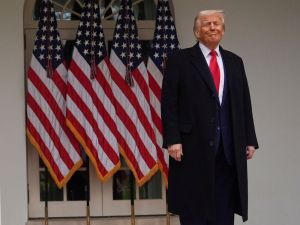How to Save Climate Finance Multilateralism

The climate finance negotiations at the COP 29 summit in Baku, Azerbaijan, showed the emerging cracks of multilateralism. Dubbed the finance COP, the Baku summit focused on new financial targets of climate finance contributions from developed countries to developing countries to help them mitigate and adapt to climate change. While negotiators burned the midnight oil and finally arrived at a decision of at least $300 billion a year a year by 2035, the ever-increasing public finance problems in developed countries raise the possibility that they might turn away from a multilateral approach in the future. Instead, developed countries might turn to signing bilateral and regional climate finance agreements with a smaller set of countries, just like in international trade.
The negotiation over climate finance that almost collapsed was reminiscent of the failed multilateral trade negotiations at the turn of the century. At the 2001 Doha Round at the World Trade Organization, the main trade agenda was lowering agriculture subsidies in developed countries, which was an important issue for developing countries but near a political impossibility for developed countries for some of their constituents. Thus, developed countries left the multilateral negotiations and began to sign bilateral and regional trade agreements with their preferential trade partners, which left out many developing countries around the world.
A quarter century later, the world is again spiraling down to protectionism and isolationism. The US is expected to dial down its involvement and financial contributions in climate negotiations in the foreseeable future. The UK, the next de facto climate leader, has a huge fiscal budget deficit that is poised to only get larger. The recent ouster of the French Prime Minister over fiscal problems also foreshadowed problems for other cash-strapped EU countries.
Climate change requires a collective effort. To save climate finance multilateralism, there are three main recommendations on contributions, membership, and investment environment:
Expand the contributor base
First, expand the contributor base. One of the most controversial negotiations at the Finance COP was about who should pay. This is due to the historical legacy in which countries used the 1992 UNFCCC classifications to designate which countries are developed or developing and who should pay whom. A lot has changed in the last thirty years. For example, China, most notably, as well as Saudi Arabia and UAE, have grown in wealth and in fossil fuel consumption and production. Encouraging voluntary contributions and investments from more countries can expand the financial base and further help climate vulnerable countries.
Include private sector and multilateral development banks in negotiations
Second, include private sector and multilateral development banks (MDBs) in negotiations. Trillions of dollars needed for climate change mitigation and adaptation will not be provided by developed countries’ public finance alone. Currently, private actors and MDBs are not parties to multilateral climate finance negotiations although governments and MDBs can help de-risk private investment through blended finance and act as a catalyst for more investment. Including the private sector and MDBs in negotiations can help most vulnerable countries to cooperate on climate solutions for each country-specific conditions with enhanced country ownership.
Create an enabling and stable investment environment
Third, create an enabling and stable investment environment for foreign climate investments. The biggest demand by the private sector at the COP 29 summit was regulatory certainty and stable investment environment in host markets. Businesses pointed out regulatory uncertainty and political and economic volatility hindering their climate investments. Attracting private investments would require a transformative whole-of-society approaches to create a stable and predictable investment environment.
Climate negotiaitons are ultimately finance negotiations. Climate finance has the potential to unlock trillions of investment and enable developing countries join the global value chain of clean energy transition for green development. If the next COP 30 summit in Brazil leads to substantive investment discussions and deals in innovative mitigation and adaptation projects, especially in countries most vulnerable to climate change, future generations and the planet will be better off.




